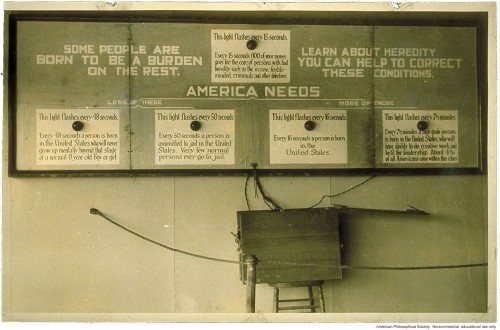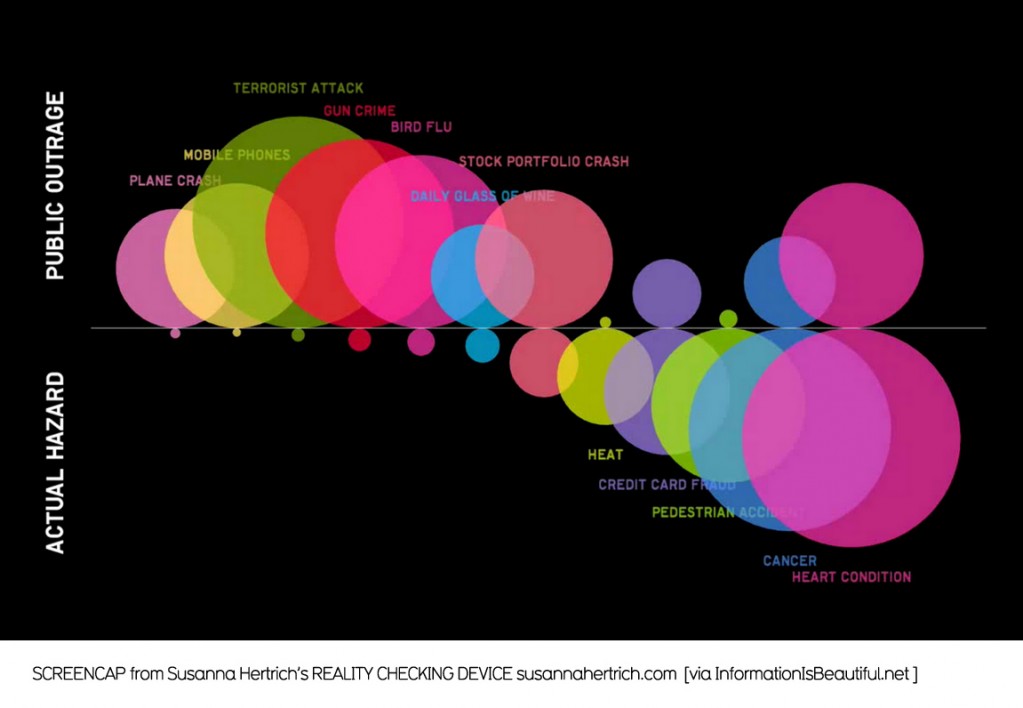A 1926 eugenics poster (from autistics.org):

From left to right the boxes say (and the left two are what we need less of, the right two what it says we need mroe of):
This light flashes every 48 seconds. Every 48 seconds a person is born in the United States who will never grow up mentally beyond that stage of a normal 8 year old boy or girl.
This light flashes every 50 seconds. Every 50 seconds a person is committed to jail in the United States. Very few normal persons ever go to jail.
This light flashes every 16 seconds. Every 16 seconds a person is born in the United States.
This light flashes every 7 1/2 minutes. Every 7 1/2 minutes a high grade person is born in the United States who will have ability to do creative work and be fit for leadership. About 4% of all Americans come within this class.
Here’s another example of the use of pseudoscience to make racial arguments (via):

Notice that the “woman mulatto” is draw to appear extremely unattractive, and that while the white man and mulatto woman have a “pass-for-white” daughter, the son on the far left isn’t “pass-for-black”–he really is black. The idea of “passing for black” made no sense at the time, while “passing for white” was a major concern. I am surprised to see here, though, that the baby of the pass-for-white woman and the white man is defined as entirely white.
Of course, none of this makes any logical sense at all, but lots of supposedly scientific studies at the time applied many statistical and other methods to prove various racial arguments.








